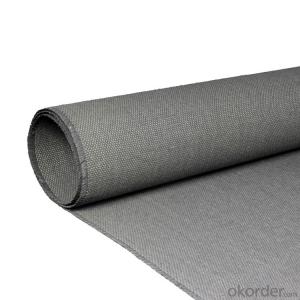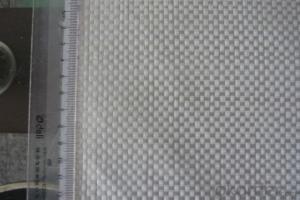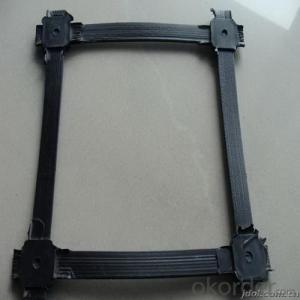Fireproof Fiberglass Fabrics Coated With Calcium Silicate
- Loading Port:
- Ningbo
- Payment Terms:
- TT OR LC
- Min Order Qty:
- 500 m²
- Supply Capability:
- 300000 m²/month
OKorder Service Pledge
OKorder Financial Service
You Might Also Like
Description: The heavyweight woven fiberglass fabric treated with special calcium silicate solution which provides a high-temperature resistance as well as greater abrasion. The continuous temperature up to 700℃, Short burst up to 750℃
Features: high temperature resistance,heat resistance
Application: Removable insulation mattress, jacket & pad, Fire doors/smoke curtain, Dust filter bag, Flexible expansion joints & compensators
PRICE: USD5 per square meter
UNIT: square meter
MOQ: 500square meters
Weight: 1100gsm
Width: 1m 1.5m 1.8m or customized
Yarn Type: E-glass
Standing temperature: up to 700℃
Product name: Calcium Silicate Coated Fiberglass Fabric
Coating/Finish/Surface Treatment: Calcium Silicate coated
Roll length: 50 meter or customized
Color: grey or customized
Weave Type:plain woven
Alkali content: Alkali free
Processing service: cutting
Material: fiberglass
Thickness: 1.4mm
Size: can be customized
Supply ability: 300000 meters per month
Packaging: Rolls packed In cartons loaded on pallets or according to customers' requirements.
Lead time: 7-30 days

- Q:Can fiberglass fabric be used for insulation in industrial equipment?
- Yes, fiberglass fabric can be used for insulation in industrial equipment. Fiberglass fabric is a versatile material that offers excellent thermal insulation properties. It is lightweight, non-combustible, and resistant to heat, chemicals, and moisture. These characteristics make it ideal for insulating industrial equipment such as boilers, furnaces, tanks, and pipes. Fiberglass fabric can effectively minimize heat transfer, reduce energy loss, and maintain stable temperatures in industrial processes. Additionally, it is easy to install, durable, and has a long lifespan, making it a cost-effective insulation solution for industrial applications.
- Q:Is fiberglass fabric suitable for use in filtration systems?
- Yes, fiberglass fabric is suitable for use in filtration systems. Fiberglass is known for its high temperature resistance, chemical resistance, and durability. These properties make it an excellent choice for filtration systems that require a material capable of withstanding harsh conditions. Fiberglass fabric is commonly used in air filters, water filters, and industrial filtration applications. It has a high filtration efficiency, effectively capturing and removing particles and contaminants from fluids and gases. Additionally, fiberglass fabric can be easily customized to meet specific filtration requirements, such as varying pore sizes or thicknesses. Overall, fiberglass fabric is a reliable and effective material for filtration systems.
- Q:Can fiberglass fabric be used for tent or awning materials?
- Yes, fiberglass fabric can be used for tent or awning materials. It is a lightweight, durable, and weather-resistant material that can provide strength and stability to tents and awnings. Additionally, fiberglass fabric is known for its excellent thermal insulation properties, making it suitable for various outdoor applications.
- Q:Can fiberglass fabric be used for making window screens?
- Yes, fiberglass fabric can be used for making window screens. Fiberglass is a lightweight and durable material that is resistant to tears, corrosion, and UV rays, making it an ideal choice for window screens. It is also highly flexible, allowing for easy installation and removal. Additionally, fiberglass fabric has a fine mesh structure that effectively keeps out insects while still allowing for airflow and visibility. Overall, fiberglass fabric is a popular and reliable option for making window screens.
- Q:Can fiberglass fabric be used for insulation in telecommunications cables?
- Fiberglass fabric is indeed suitable for insulation in telecommunications cables. This fabric possesses exceptional thermal insulation properties, rendering it an optimal selection for the insulation of cables that carry electrical signals. Furthermore, it can endure high temperatures and exhibits resistance against fire, chemicals, and abrasion. Consequently, it provides a dependable and long-lasting solution for the insulation needs of telecommunications cables. Moreover, fiberglass fabric is lightweight, flexible, and easily manageable, which facilitates the installation and maintenance of cables. Its elevated dielectric strength guarantees the absence of interference with the electrical signals transmitted through the cables. Accordingly, fiberglass fabric is commonly employed as an insulation material in telecommunications cables, ensuring the protection of the cables and facilitating efficient and reliable signal transmission.
- Q:Can fiberglass fabric be used for making bags or backpacks?
- Yes, fiberglass fabric can be used for making bags or backpacks. It is a durable and lightweight material that provides excellent strength and resistance to tearing.
- Q:Can fiberglass fabrics be used for insulation in HVAC ductwork?
- Yes, fiberglass fabrics can be used for insulation in HVAC ductwork. Fiberglass is a commonly used material for thermal insulation due to its excellent heat resistance and insulation properties. It can help prevent heat loss or gain in ductwork, improving energy efficiency and maintaining desired temperatures. Additionally, fiberglass fabrics are lightweight, easy to install, and offer good acoustic insulation.
- Q:How does fiberglass fabric handle moisture?
- Fiberglass fabric has excellent resistance to moisture and is considered to be highly water-resistant. Due to its composition of woven glass fibers, it does not absorb water and is unaffected by moisture or humidity. This makes fiberglass fabric ideal for applications where exposure to moisture is expected, such as boat hulls, outdoor furniture, and building materials. Additionally, fiberglass fabric does not promote the growth of mold or mildew, further enhancing its ability to handle moisture.
- Q:Can fiberglass fabric be used for making insulation blankets?
- Yes, fiberglass fabric can be used for making insulation blankets. Fiberglass fabric is known for its excellent thermal insulation properties, making it an ideal material for creating insulation blankets. These blankets are designed to trap heat and prevent its transfer, providing effective insulation in various applications such as in homes, industrial settings, and even in aerospace and automotive industries. The fiberglass fabric used in insulation blankets is typically woven or knitted, allowing it to be flexible and easily molded to fit different shapes and sizes. Additionally, fiberglass fabric is lightweight, fire-resistant, and resistant to chemicals and moisture, making it a reliable choice for insulation applications.
- Q:What are the potential health risks associated with handling fiberglass fabric?
- There are several health risks that may arise from handling fiberglass fabric. One major concern is the potential for skin irritation or allergic reactions. The presence of tiny glass fibers in fiberglass fabric can cause skin irritation, resulting in redness, itching, and rashes. Extended or repeated exposure to these fibers can also lead to dermatitis, which is characterized by skin inflammation. In addition to skin irritation, fiberglass fabric can be harmful if it is inhaled. When the fabric is cut, sanded, or disturbed in any way, it releases small fibers into the air. Inhaling these fibers can irritate the respiratory system, leading to coughing, wheezing, and difficulty breathing. Over time, repeated exposure to fiberglass fibers may result in more severe respiratory conditions like bronchitis or even lung cancer. Moreover, the small size of fiberglass fibers makes them challenging to detect and remove from the body once they have been inhaled or come into contact with the skin. This can lead to long-term health risks as these fibers can become lodged in the lungs or other organs, causing chronic inflammation and scarring. To minimize the potential health risks associated with handling fiberglass fabric, it is crucial to take proper precautions. This involves wearing protective clothing, such as gloves, long sleeves, and pants, to prevent direct contact with the skin. Using a respirator or mask can help reduce the inhalation of fiberglass fibers. It is also important to work in a well-ventilated area or use exhaust fans to decrease the concentration of airborne fibers. Regularly cleaning and maintaining workspaces to eliminate any accumulated fibers is also advisable. In conclusion, while fiberglass fabric has various applications and advantages, it is essential to be mindful of the potential health risks associated with its handling. By taking appropriate precautions, individuals can minimize the likelihood of experiencing adverse health effects.
1. Manufacturer Overview |
|
|---|---|
| Location | |
| Year Established | |
| Annual Output Value | |
| Main Markets | |
| Company Certifications | |
2. Manufacturer Certificates |
|
|---|---|
| a) Certification Name | |
| Range | |
| Reference | |
| Validity Period | |
3. Manufacturer Capability |
|
|---|---|
| a)Trade Capacity | |
| Nearest Port | |
| Export Percentage | |
| No.of Employees in Trade Department | |
| Language Spoken: | |
| b)Factory Information | |
| Factory Size: | |
| No. of Production Lines | |
| Contract Manufacturing | |
| Product Price Range | |
Send your message to us
Fireproof Fiberglass Fabrics Coated With Calcium Silicate
- Loading Port:
- Ningbo
- Payment Terms:
- TT OR LC
- Min Order Qty:
- 500 m²
- Supply Capability:
- 300000 m²/month
OKorder Service Pledge
OKorder Financial Service
Similar products
New products
Hot products
Hot Searches
Related keywords



























